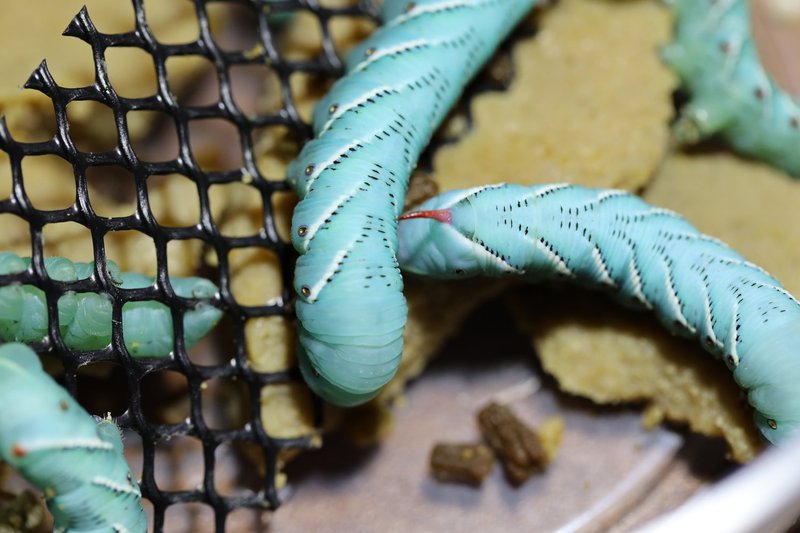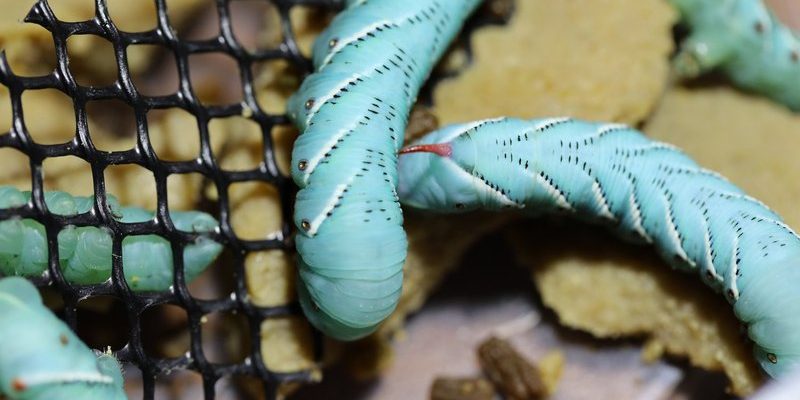
In this guide, I’ll walk you through everything you need to know about raising hornworms, from their care and feeding needs to some tips and tricks that can make the process smoother. You might be wondering why hornworms specifically? Well, these caterpillars are like the *steak* of the insect world when it comes to nutrition, offering a rich source of proteins and nutrients. Ready to dive in? Let’s get started!
Understanding Hornworms: What They Are and Why They Matter
Hornworms are the larvae of the **hornworm moth**, primarily the *Manduca sexta* species. These caterpillars are known for their distinctive appearance, boasting a bright green body with a horn-like projection on their rear. Honestly, they can look a bit alien at first glance! But don’t let their appearance scare you away; they’re harmless and quite easy to handle.
Raising hornworms as feeder insects is not just practical; it’s also incredibly rewarding! They grow quickly, turning from tiny eggs to sizable caterpillars in just a couple of weeks. If you’re someone who enjoys seeing the life cycle of creatures, this can be an exciting process. It’s not just about feeding your pets; it’s about engaging with nature right at your fingertips. Plus, by raising them yourself, you can ensure they’re healthy and free from harmful chemicals often found in store-bought options.
Setting Up Your Hornworm Habitat
Creating the ideal environment for your hornworms is key. They need a habitat that mimics their natural setting to thrive. Here’s what you’ll need to get started:
- Container: A plastic container with ventilation holes is perfect. A 10-gallon tank works well, but make sure it has a lid to prevent escapees!
- Substrate: Line the bottom with paper towels or newspaper. This will aid in cleaning up waste and keeping moisture levels in check.
- Temperature: Hornworms prefer a temperature between 75°F and 85°F. Using a heat lamp or a small space heater can help maintain this range.
You might be wondering why ventilation is so important. Well, hornworms need fresh air to breathe, and too much humidity can lead to mold, which is definitely something you want to avoid. If the environment is too humid, you might find yourself dealing with sick hornworms or worse, a whole batch dying off.
Feeding Your Hornworms: What They Love to Eat
Hornworms are not picky eaters, which is great news for you as a caretaker! They thrive on a diet primarily consisting of **tomato leaves** or specialized insect feed. Believe it or not, these guys can consume a lot, especially when they begin to grow. Here’s how to get their feeding right:
- Tomato Plants: If you have access to tomato plants, the leaves are a natural and healthy option for feeding them. Just be sure the plants haven’t been treated with pesticides!
- Commercial Diets: You can also find commercial **hornworm chow** specifically designed for their nutritional needs. This is especially handy if you want to avoid the extra work of harvesting leaves.
When you set up their feeding station, it’s best to provide fresh food every few days. You’ll notice that hornworms are voracious eaters, so don’t be surprised if they devour their food quickly! Just keep an eye on their eating habits—if they seem sluggish, you might want to check their diet or the temperature of their habitat.
Handling Hornworms: Safety and Care
Handling hornworms doesn’t have to be daunting. With a little practice, you’ll get comfortable with them. Here’s how to do it safely:
1. **Washing Your Hands:** Always wash your hands before handling hornworms to avoid transferring any harmful substances.
2. **Gentle Touch:** Use your fingers or a soft tool to pick them up. They’re delicate, so be gentle to avoid harming them.
3. **Avoiding Stress:** When handling, keep it quick. These caterpillars can get stressed if they feel threatened, impacting their health.
You might be surprised to learn how friendly they can be. Hornworms don’t bite or sting, making them safe for even the most timid of caretakers. Just remember, they may wiggle and squirm a bit when you pick them up—that’s totally normal!
Common Problems and Troubleshooting
Even the best caregivers can run into a few bumps along the way. Here’s a look at some of the common issues you might face while raising hornworms and how to fix them:
1. **Mold Growth:** If you notice mold in their habitat, it’s usually due to excessive moisture. Cut back on how often you’re misting the habitat and ensure good ventilation.
2. **Temperature Control:** If the environment is too cold, hornworms can become lethargic. Use a heat lamp or move them to a warmer spot.
3. **Health Issues:** Watch for signs of sickness, such as unusual behavior or lack of appetite. Identifying these early can save your caterpillars.
Sometimes, it’s a matter of trial and error. Don’t get discouraged if things don’t go perfectly the first time around. Raising hornworms is a learning experience, and you’ll gain confidence as you go!
Harvesting Hornworms: When and How to Do It
When your hornworms reach about 3 to 4 inches in length, they’re ready to be harvested. Here’s how to do it smoothly:
– **Check Their Size:** Typically, hornworms are harvested when they’re about 3 to 4 inches long. This is when they pack the most nutrients.
– **Remove Carefully:** Gently pick them from their habitat, ensuring not to squish them as you remove them.
– **Store Properly:** If you’re not using them immediately, you can store them in a ventilated container with fresh food until you’re ready.
Here’s the thing: hornworms don’t have a long shelf life once harvested. They should ideally be fed to your pets within a few days for maximum freshness and nutritional value.
Raising hornworms as feeder insects can be an incredibly rewarding hobby. From watching them grow to knowing you’re providing your pets with a healthy snack, there’s a lot to love about these fascinating creatures. With the right setup, care, and feeding, you’ll soon find yourself with a thriving mini-farm of hornworms.
So, what are you waiting for? Dive into the world of hornworm raising and enjoy the process! Whether it’s experimenting with their diet or just observing their unique behaviors, there’s always something new to learn. Happy raising!

